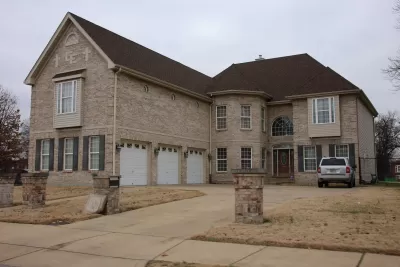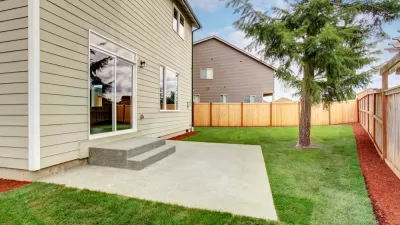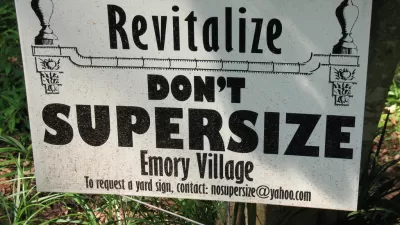McMansion or not, the American home is a good 600 to 800 square feet larger than the average in most other countries. Possible reasons run the gamut from policy to culture to personal economics.

It's no secret that the United States boasts big houses. Average American homes are significantly larger than their global counterparts, and the contrast is even more stark for newer American constructions. Here, Joe Pinsker takes a look at a range of causes for this country's size obsession.
One set of reasons has to do with deliberate policies that "have for the past century effectively steered Americans toward living in detached single-family homes" and commuting by car. Other factors are cultural, like a supposed American preference for space, or historical, like the relative newness of American metros compared to European counterparts built atop medieval foundations.
"In the case of the U.S., more than national wealth is linked to size—there's often a personal financial advantage to it as well," Pinsker writes. Getting a big mortgage on a spacious house, or so the thinking goes, pays off in the long run as the larger house appreciates with time.
Despite the American fixation with space, Pinsker also notes how norms can shift. According to one study, "from 2003 to 2018, the median square footage that home buyers said they wanted dropped from 2,260 to 2,066."
FULL STORY: Why Are American Homes So Big?

Alabama: Trump Terminates Settlements for Black Communities Harmed By Raw Sewage
Trump deemed the landmark civil rights agreement “illegal DEI and environmental justice policy.”

Study: Maui’s Plan to Convert Vacation Rentals to Long-Term Housing Could Cause Nearly $1 Billion Economic Loss
The plan would reduce visitor accommodation by 25% resulting in 1,900 jobs lost.

Planetizen Federal Action Tracker
A weekly monitor of how Trump’s orders and actions are impacting planners and planning in America.

Wind Energy on the Rise Despite Federal Policy Reversal
The Trump administration is revoking federal support for renewable energy, but demand for new projects continues unabated.

Passengers Flock to Caltrain After Electrification
The new electric trains are running faster and more reliably, leading to strong ridership growth on the Bay Area rail system.

Texas Churches Rally Behind ‘Yes in God’s Back Yard’ Legislation
Religious leaders want the state to reduce zoning regulations to streamline leasing church-owned land to housing developers.
Urban Design for Planners 1: Software Tools
This six-course series explores essential urban design concepts using open source software and equips planners with the tools they need to participate fully in the urban design process.
Planning for Universal Design
Learn the tools for implementing Universal Design in planning regulations.
Caltrans
Smith Gee Studio
Institute for Housing and Urban Development Studies (IHS)
City of Grandview
Harvard GSD Executive Education
Toledo-Lucas County Plan Commissions
Salt Lake City
NYU Wagner Graduate School of Public Service





























